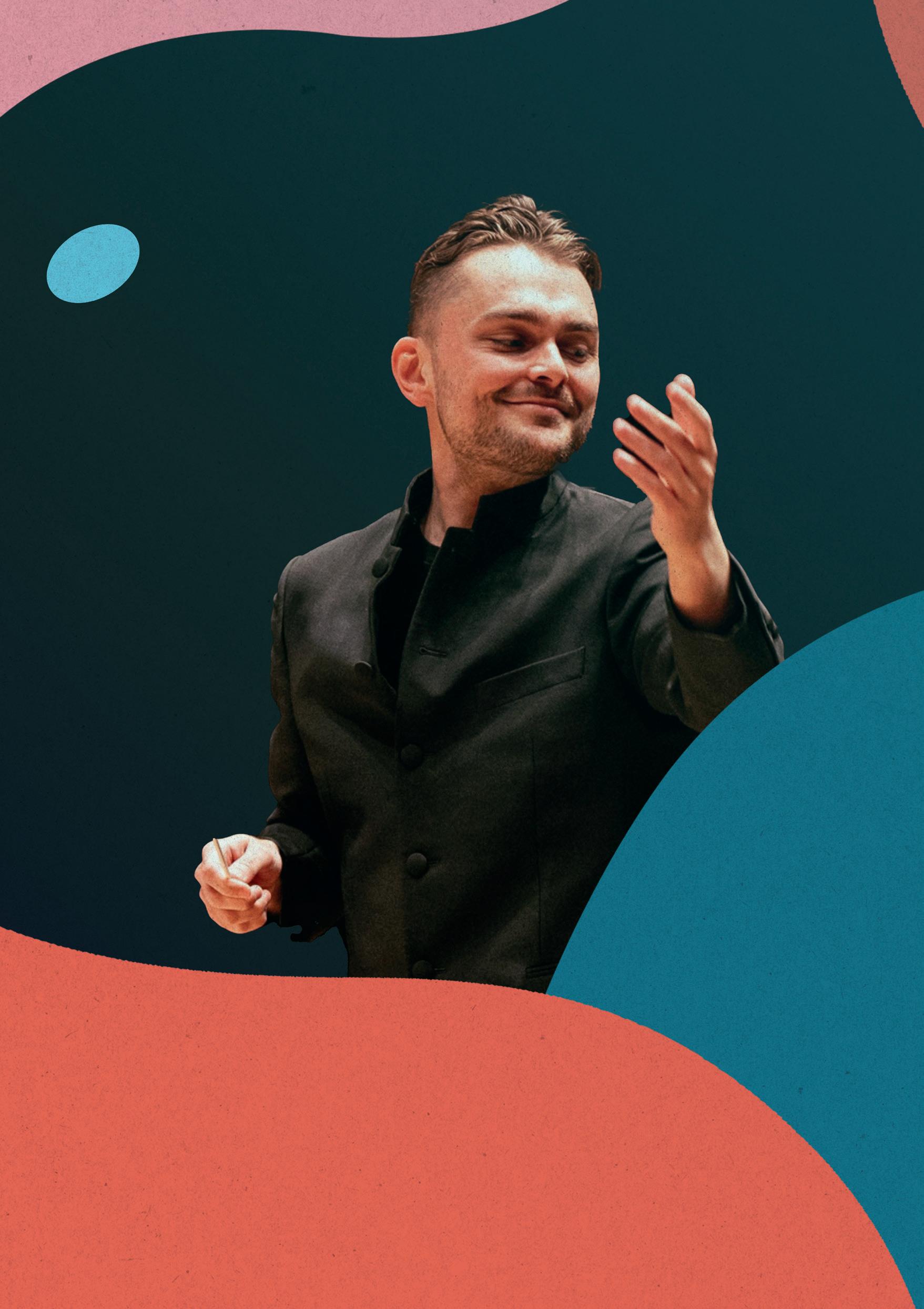
27-29 August 2025
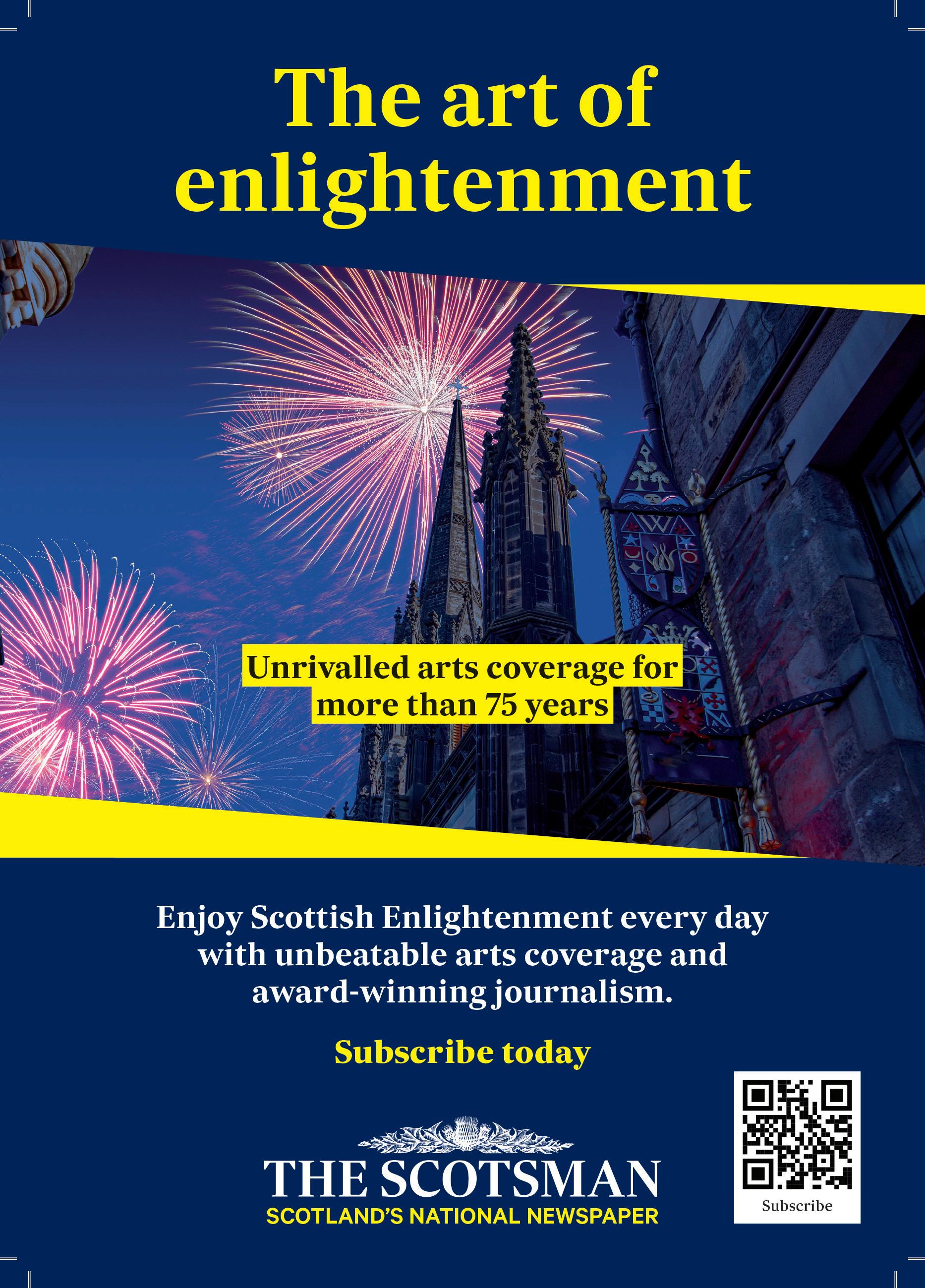



27-29 August 2025


The Airdrie
is in association with

association with
Wednesday 27 August, 7.30pm Airdrie Town Hall
Kindly supported by Eriadne & George Mackintosh, Claire & Anthony Tait and The Jones Family Charitable Trust
The Inverness
is in association with
Thursday 28 August, 7.30pm Blair Castle, Blair Atholl
Friday 29 August, 7.30pm Eden Court, Inverness
ROSSINI Overture, The Barber of Seville
SPOHR Clarinet Concerto No 2 in E-flat
Interval of 20 minutes
SCHUBERT Symphony No 2 in B-flat
Jakob Lehmann Conductor
Maximiliano Martín Clarinet
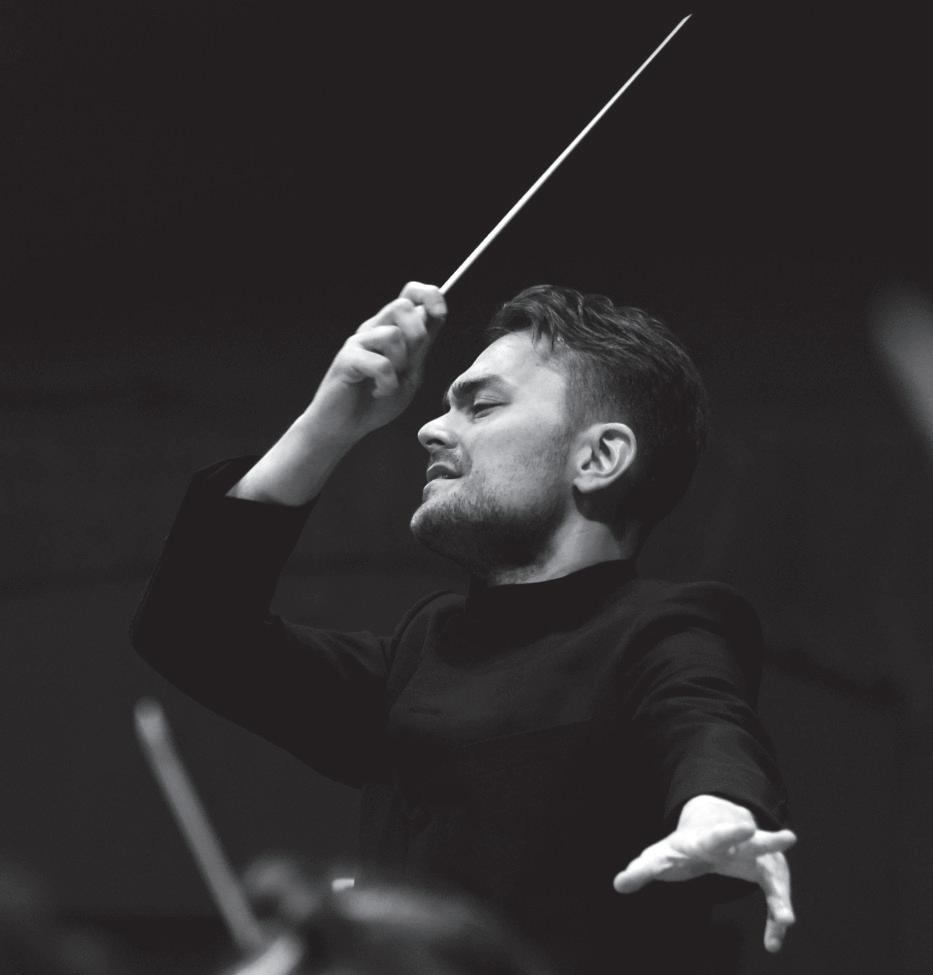
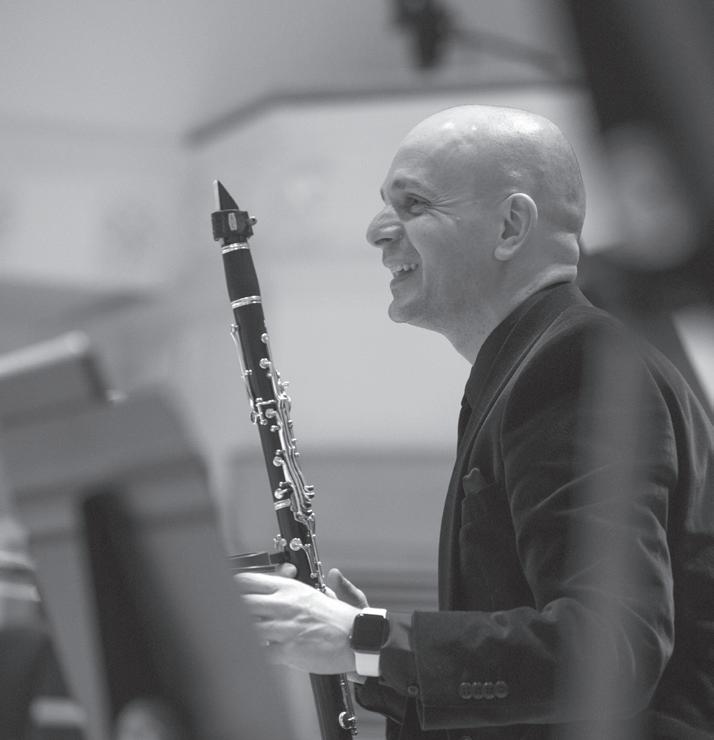
4 Royal Terrace, Edinburgh EH7 5AB
+44 (0)131 557 6800 | info@sco.org.uk | sco.org.uk
The Scottish Chamber Orchestra is a charity registered in Scotland No. SC015039. Company registration No. SC075079.
THANK YOU
Our Principal Conductor’s Circle are a special part of our musical family. Their commitment and generosity benefit us all – musicians, audiences and creative learning participants alike.
Annual Fund
James and Patricia Cook
Visiting Artists Fund
Colin and Sue Buchan
Harry and Carol Nimmo
Anne and Matthew Richards
International Touring Fund
Gavin and Kate Gemmell
Creative Learning Fund
Sabine and Brian Thomson
Conductor Emeritus Joseph Swensen
Donald and Louise MacDonald
Chorus Director Gregory Batsleer
Anne McFarlane
Principal Second Violin
Marcus Barcham Stevens
Jo and Alison Elliot
Second Violin Rachel Smith
J Douglas Home
Principal Viola Max Mandel
Ken Barker and Martha Vail Barker
Viola Brian Schiele
Christine Lessels
Viola Steve King
Sir Ewan and Lady Brown
Principal Cello Philip Higham
The Thomas Family
Sub-Principal Cello Su-a Lee
Ronald and Stella Bowie
American Development Fund
Erik Lars Hansen and Vanessa C L Chang
Productions Fund
Anne, Tom and Natalie Usher
Bill and Celia Carman
Anny and Bobby White
Scottish Touring Fund
Eriadne and George Mackintosh
Claire and Anthony Tait
Cello Donald Gillan
Professor Sue Lightman
Cello Eric de Wit
Jasmine Macquaker Charitable Fund
Principal Double Bass
Caroline Hahn and Richard Neville-Towle
Principal Flute André Cebrián
Claire and Mark Urquhart
Principal Oboe
The Hedley Gordon Wright Charitable Trust
Sub-Principal Oboe Katherine Bryer
Ulrike and Mark Wilson
Principal Clarinet Maximiliano Martín
Stuart and Alison Paul
Principal Bassoon Cerys Ambrose-Evans
Claire and Anthony Tait
Principal Timpani Louise Lewis Goodwin
Geoff and Mary Ball



“A crack musical team at the top of its game”
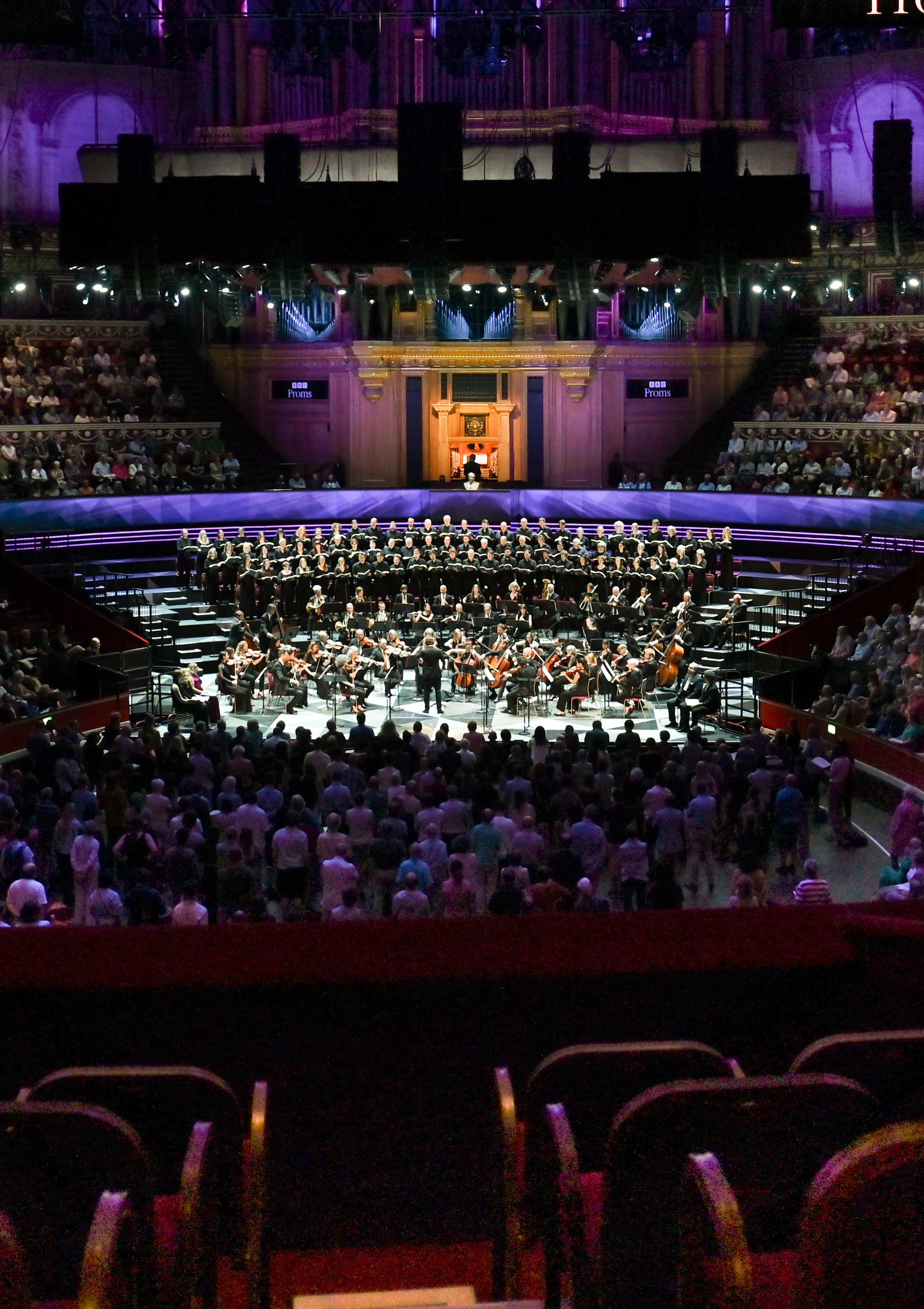
HM The King
Patron
Donald MacDonald CBE
Life President
Joanna Baker CBE
Chair
Gavin Reid LVO
Chief Executive
Maxim Emelyanychev
Principal Conductor
Andrew Manze
Principal Guest Conductor
Joseph Swensen
Conductor Emeritus
Gregory Batsleer
Chorus Director
Jay Capperauld
Associate Composer
Information correct at the time of going to print
First Violin
Stephanie Gonley
Afonso Fesch
Emily Davis
Amira Bedrush-McDonald
Fiona Alexander
Sarah Bevan Baker
Wen Wang
Kirsty Main
Second Violin
Mark Derudder
Gordon Bragg
Michelle Dierx
Rachel Smith
Stewart Webster
Kristin Deeken
Viola
Max Mandel
Francesca Gilbert
Elaine Koene
Rebecca Wexler
Cello
Philip Higham
Donald Gillan
Eric de Wit
Niamh Molloy
Bass
Jamie Kenny
Rupert Ring
Flute
Fiona Fulton
Alba Vinti Lopez
Oboe
Yann Thenet
Katherine Bryer
Clarinet
Maximiliano Martín
Calum Robertson
Bassoon
Cerys Ambrose-Evans
Alison Green
Max Mandel Principal Viola
Horn
Kenneth Henderson
Jamie Shield
Trumpet
Peter Franks
Shaun Harrold
Timpani
Louise Lewis Goodwin
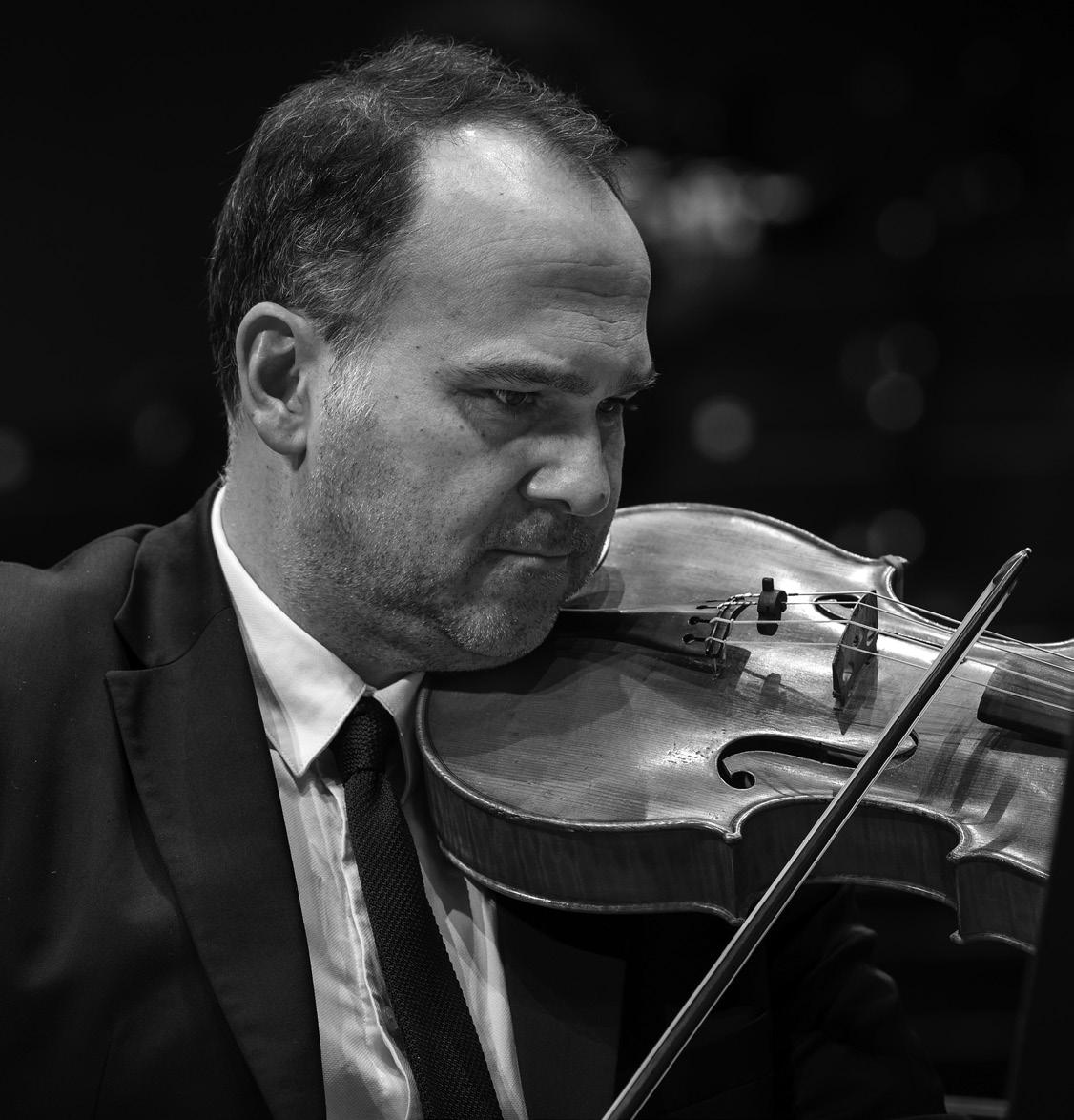
ROSSINI (1792-1868)
Overture, The Barber of Seville (1816)
SPOHR (1784-1859)
Clarinet Concerto No 2 in E-flat, Op 57 (1810)
Allegro
Adagio Rondo alla Polacca
SCHUBERT (1797-1828)
Symphony No 2 in B-flat, D 125 (1814-15)
Largo — Allegro vivace Andante
Menuetto: Allegro vivace Presto
Like so many aspects of our lives, musical tastes come and go. What’s fresh, new and invigorating today might be scorned as oldfashioned and boring tomorrow. And that’s despite a broadly recognised pantheon of musicians down the centuries whose creations seem to rise above the vagaries of fashion. Even simply accepting the unassailable genius of composers such as Bach, Beethoven and Brahms (to name just three) throws those lesser-known musicians working alongside them into even greater obscurity. Not that those god-like composers are necessarily immune themselves: we may celebrate some portion of their output but disregard another, considering it less successful or simply too youthful and naive.
Why dwell on the fickleness of musical fashion? Because tonight’s concert serves as a vivid example of it in action. It ranges from a much-adored comic Overture whose composer is probably as highly regarded today as he was in the early 19th century, via a Concerto whose creator, though once acclaimed, is now far less familiar, to a youthful and seldom heard Symphony by one of that grand pantheon.
For many listeners, the Overture to Gioachino Rossini’s 1816 opera The Barber of Seville is the epitome of effervescent Italian wit, summing up to a tee the scheming hairdresser running rings around local bigwigs at the centre of the composer’s comic romp. This music, however, wasn’t written for The Barber of Seville at all. Rossini had originally composed the Overture for his 1813 opera Aureliano in Palmira, and then reused it in his 1815 Elizabeth, Queen of England. His rather shameless re-recycling for The Barber of Seville marked his third use of the material –but there was a reason.
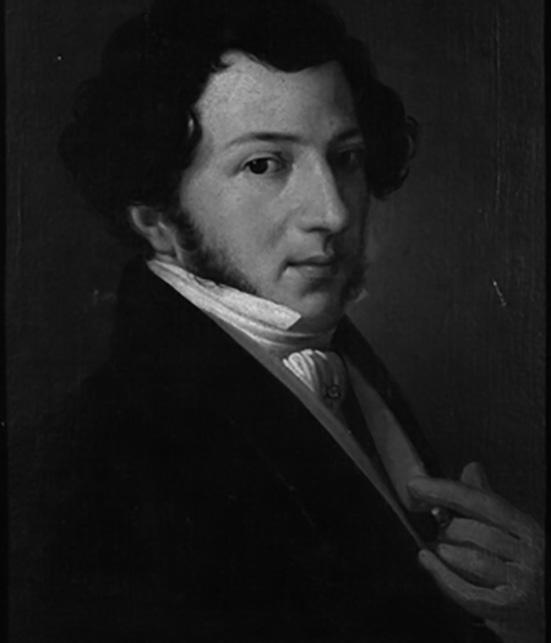
In fact, Rossini had simply run out of time. Remarkably, he dashed off The Barber of Seville in less than three weeks – not that you’d ever suspect it from the opera’s wealth of wit and melody. But that was hardly unusual. Rossini was a notoriously fast worker: he’d maintain the pace of producing at least two operas a season for 19 years. He’d originally planned something Spanish-sounding for The Barber of Seville’s Overture, to match the opera’s Iberian setting, but left things too late to put it together. In the end, recycling older material was his only option.
The irony, of course, is how indelibly we associate the Overture’s bubbling comedy and good humour with the opera itself – despite the fact that it contains not a single theme or melody that we’ll encounter later in the work. And for eagle-eared listeners at the opera’s first performance – on 20 February 1816 at Rome’s Teatro Argentina – that redeployment of existing music was perhaps just one reason behind the show’s fiasco of a premiere.
Rossini was a notoriously fast worker: he’d maintain the pace of producing at least two operas a season for 19 years.
For a start, rival composer Giovanni Paisiello – who’d already scored a hit with his own operatic version of Beaumarchais’ 1775 comedy – turned up with some cronies to disrupt this new version by the upstart Rossini before it gained a foothold in audiences’ affections. They proceeded to cause mayhem, allegedly releasing a stray cat to prowl around the stage, and the poorly rehearsed cast hardly helped by tripping over scenery, falling through trapdoors and missing their cues. Appalled, Rossini left early and stayed away the following night too. When a mob of torch-wielding locals approached his residence after the second performance, he feared the worst. In fact, they were there to proclaim and celebrate his genius, and Rossini’s Barber soon found a permanent place in the repertoire. Its music became so well known and widely loved, in fact, that it later inspired affectionate parodies from the likes of Woody Woodpecker, Bugs Bunny and Tom and Jerry, each in their own individual animated take.
Launching with some attention-grabbing loud chords, Rossini’s Overture seems barely able to contain its excitement in its restrained opening section. The loud chords return to kick off the Overture’s faster section, contrasting a nimble but melancholy violin tune against a wittier, far more mischievous oboe melody. After a couple of Rossini’s trademark swelling crescendos, the tempo surges forward even faster before the Overture’s exuberant conclusion.
Our next composer, Louis Spohr, serves as a perfect example of the fickleness of fame. Though lauded and fêted during his lifetime – he was regularly lined up next to Beethoven and Mendelssohn as a master composer, for example – he’s undeniably slipped from broader consciousness, so that he’s a far less prominent figure to us today. The reasons behind that have less to do with the inherent quality of his music – as tonight’s Clarinet Concerto No 2 will surely demonstrate – and more to do with changing musical tastes. For Spohr had the misfortune – or, perhaps, the luck – to live and work as the elegance, balance and emotional restraint of Haydn and Mozart was fracturing into the boldness, heroism and high emotion of a brand new style, epitomised by the music of Mendelssohn and Schumann. As a result, Spohr’s own inventive, exquisitely crafted but elegantly restrained music ended up sounding a little old-fashioned when lined up next to the daring innovations and unashamed individuality of composers writing just a few years later.
It's a shame, but it’s also all the more reason we should pay attention to music that falls into the cracks. Spohr was a prolific and highly successful composer in his time, writing several symphonies and operas, four clarinet concertos and no fewer than 18 for the violin, his own instrument. Indeed, he was held in lofty regard across Europe as a violin virtuoso,
and proved a deeply influential figure in the instrument’s development, not only because of his more than 200 pupils who carried his ideas across the continent, but also because he invented the chinrest that many violinists still use today. If Beethoven (a close friend, by the way) was a champion of liberty and brotherhood, Spohr went further with his daringly democratic and liberal political ideas, and at a rumoured 6’7”, he struck an imposing figure when he was arguing for his causes.
If Spohr’s wider output is rather unfairly overlooked these days, the same can’t quite be said for his four clarinet concertos, which have found a firmer foothold in the instrument’s repertoire. That’s partly because of their importance in the clarinet’s own development, of course: Mozart had championed it early on, writing a Quintet and Concerto for the instrument, and about a century later Brahms did something similar with a clutch of chamber works. Spohr’s concertos sit between those two composers, at a time when the clarinet was becoming increasingly established as a virtuoso solo instrument – and tonight’s Second Concerto, sets out to showcase the clarinet’s distinctive musical personality.
Spohr wrote the Concerto in 1810 for one of the most accomplished clarinettists of the time, Johann Simon Hermstedt, who would ultimately be the dedicatee of all four of Spohr’s clarinet concertos. Its unveiling took place at one of Germany’s earliest summer music festivals, in Frankenhausen, near Leipzig, on 22 July 1810. Spohr himself conducted the premiere, and the piece was adored: one critic even described it as belonging ‘to the most perfect works of this kind’.
With its aria-like, operatic writing, its limpid virtuosity and its easy-going lyricism, it’s not
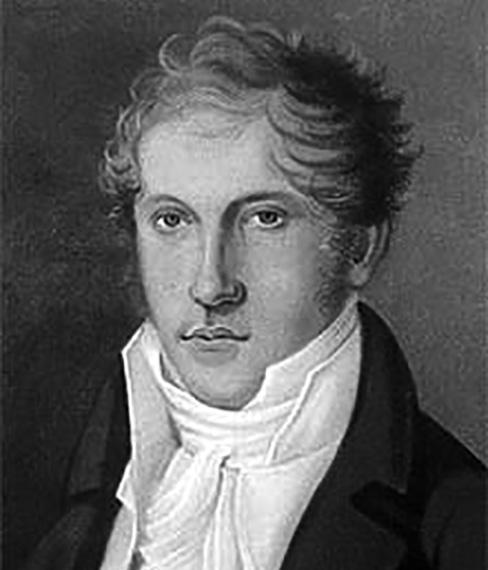
hard to see what that reviewer was getting at. After a fanfare-like flourish from the orchestra, then the soloist, the first movement kicks off with a gently march-like theme, which the clarinettist later transforms into something far more overtly virtuosic. A quieter, more reflective interlude serves to highlight the instrument’s almost vocal qualities, before a return of the opening fanfares signals a rerun of the opening themes.
Spohr’s second movement is a slow-moving, heartfelt song that makes great use of the clarinet’s rich, resonant lower register, though Spohr contrasts his opening stillness with a stormier central section that relentlessly ratchets up the tension before dissolving into a return of the lyrical opening music, now a duet for flute and clarinet. Spohr cast his finale in the fashionable form of a polonaise dance, but came up with the unusual innovation of a brief exchange between timpani and horns that launches the movement and returns again and again, bringing a festive
If Spohr’s wider output is rather unfairly overlooked these days, the same can’t quite be said for his four clarinet concertos, which have found a firmer foothold in the instrument’s repertoire.
exuberance to the movement’s gentle, sometimes humorous music.
From disregard, we close tonight’s concert with what’s probably a case of a rather patronising attitude towards a young person’s creations. Schubert’s father was a respected schoolmaster in the Lichtental district of Vienna, and though the young Franz gained a choral scholarship to study at the city’s Stadtkonvikt (or Imperial Seminary), where his teachers included none other than Antonio Salieri, upon graduating he returned home to Lichtental, where his father put him in charge of teaching some of the school’s youngest pupils.
Schubert hardly found it inspiring work. But it was paid work nonetheless – and, more importantly, it allowed him to continue twice-weekly composition lessons with Salieri, to play viola in a student orchestra, and to continue composing. He wrote his Second Symphony between December 1814 and March 1815, and dedicated it to the
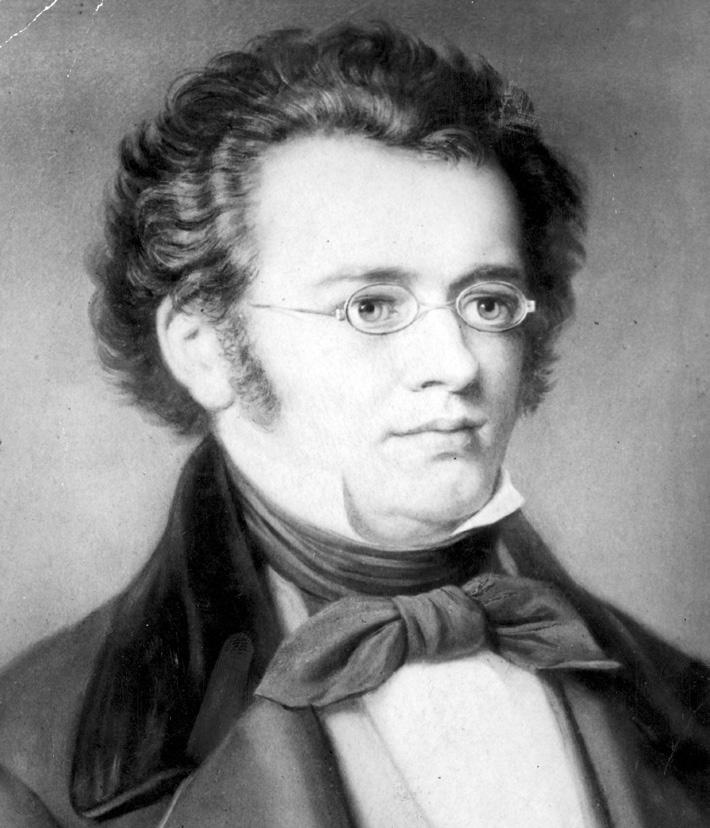
Stadtkonvikt’s headmaster, Innocenz Lang. It’s likely that the institution’s orchestra gave the Symphony its premiere.
Although the work shows the 17-year-old Schubert consciously grappling with the models of Beethoven and Haydn – and attempting to forge a style all his own – it’s a thoroughly distinctive, memorable piece. Full of songful melodies and stormy drama, this is a remarkably mature achievement for such a young musician.
A ceremonial-sounding slow introduction kicks off the Symphony’s first movement, and its main faster section seems overtly to acknowledge Beethoven’s The Creatures of Prometheus Overture: its quick theme steals in quietly before blazing out across the full orchestra. A slower-moving second main theme is set against a distinctive oscillating, buzzing accompaniment, and both themes return after the movement’s intricate but brief central development section.
It’s a thoroughly distinctive, memorable piece. Full of songful melodies and stormy drama, this is a remarkably mature achievement for such a young musician.
The second movement is a set of five variations on an elegant, song-like tune focussing more on colour and instrumentation than radical transformations of the original theme. The first variation sends the melody to the oboe, with decorations from the flute, while in the second it appears in the cellos and basses. The slightly ironed-out melody appears in horns and oboes in the third variation, while the four is an angry, stormy episode in the darker minor, and the fifth returns us to the elegance of the opening.
After a rather gruff, serious minuet for his third movement, contrasted against a more intimate central trio section, Schubert rounds his Second Symphony off with galloping melodies and intense drama in his quicksilver finale. The music hurtles along, propelled forward by incessant rhythms, bringing sudden explosions of drama as it builds to its hearty conclusion.
© David Kettle
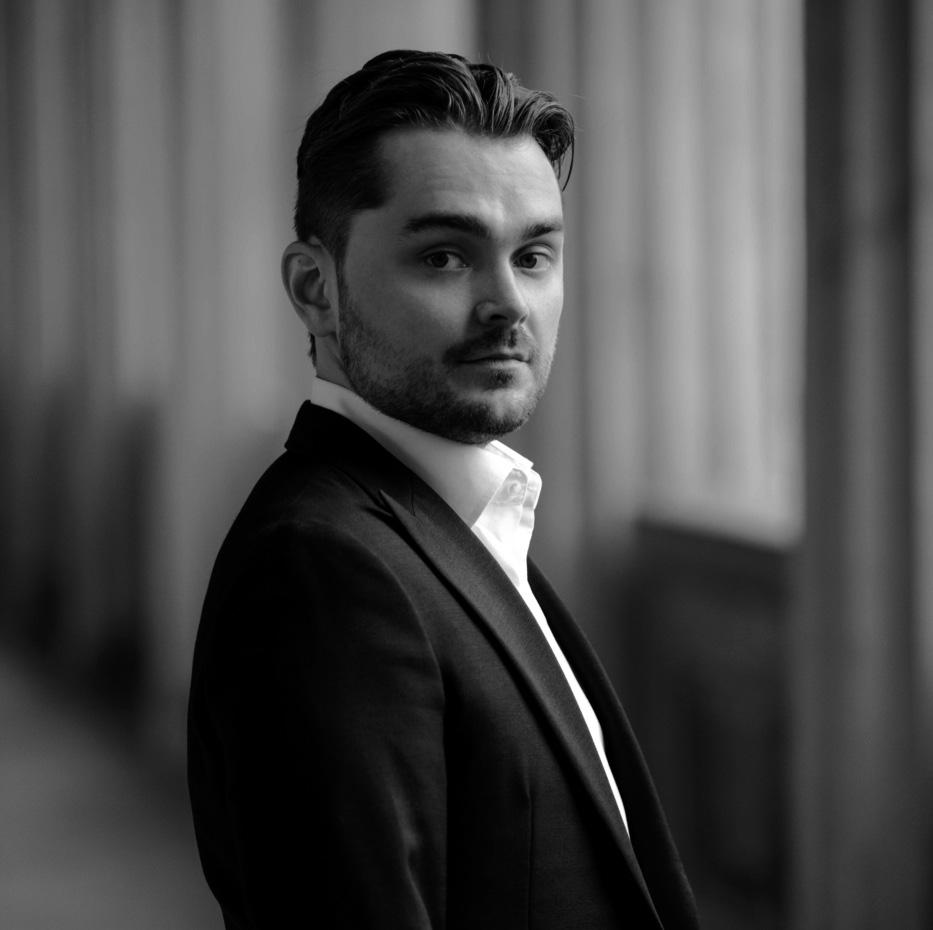
Jakob Lehmann is quickly establishing himself as a highly sought-after conductor, energetically merging historically informed performance styles and fundamental stylistic research with emotionally sincere and engaging performances on period as well as modern instruments, both in the symphonic and operatic world.
In the 2025-2026 season, he starts a long-term exploration of Rossini’s music on period instruments together with London’s Monteverdi Choir and Orchestre Révolutionnaire et Romantique, and debuts further with Symfonieorkest Vlaanderen and at the Indiana University Bloomington. He follows re-invitations to Bruckner Orchester Linz, Tonkünstler Orchester, La Banda storica Bern, Les Siècles performing works by Wagner & Lizst, and furthermore conducts a new production of Berlioz’ La damnation de Faust at the Théâtre des Champs-Elysées with Benjamin Bernheim in the title role, as well as a new production of Donizetti’s Lucia di Lammermoor as a co-production between Opéra de Rennes and AngersNantes Opéra. Further ahead he works with Vienna Volksoper, SWR Symphonieorchester and WDR Köln.
Jakob’s orchestral collaborations have included Sinfonieorchester Liechtenstein, Orchestra La Scintilla, Collegium Novum Zürich, Wiener Concert-Verein, the Juilliard Orchestra and Juilliard415, Wiener Symphoniker, Beethoven Orchester Bonn, Bochumer Symphoniker and Brandenburger Symphoniker as well as the Scottish Chamber Orchestra.
Jakob is the Artistic Director of Eroica Berlin, a chamber orchestra he founded in 2015 which performed at Hamburg’s Elbphilharmonie, Bachfest Leipzig, and three times at Brucknerhaus Linz. The group consists of young musicians from Berlin and focuses on translating the impulses and inspirations from period performance to modern instruments.
For full biography please visit sco.org.uk
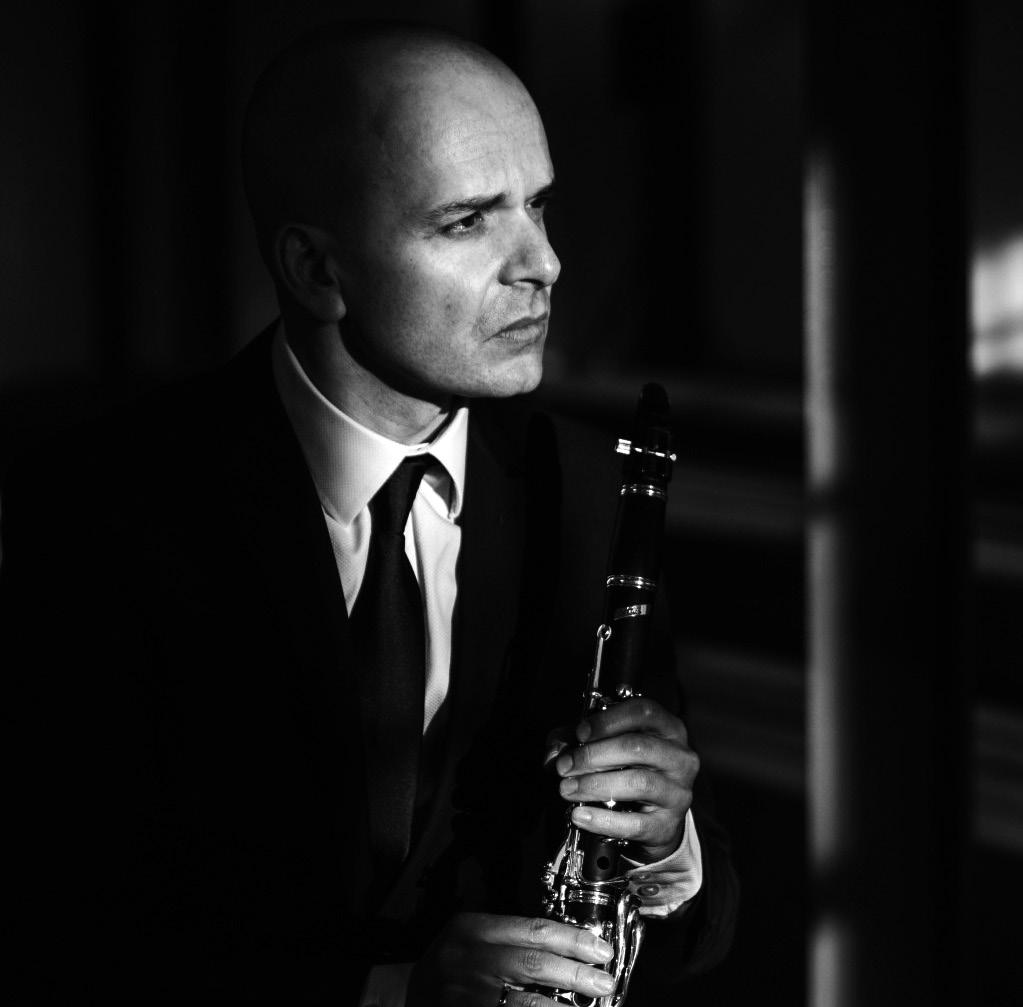
Tenerife-born clarinettist Maximiliano Martín combines his position as SCO Principal Clarinet with engagements and masterclasses internationally, appearing in many of the world’s most prestigious venues and series.
Highlights have included solo concertos with the SCO, European Union Chamber Orchestra, Orquesta Real Filarmonía de Galicia, Orquesta Filarmónica de Las Palmas de Gran Canaria, Orquesta Sinfónica del Principado de Asturias, Macedonian Philharmonic Orchestra and Estonian National Symphony Orchestra, with conductors including Brüggen, Emelyanychev, Ticciati, Manze, Antonini, Swensen, Zacharias and González.
As a chamber musician, Martín performs regularly with London Conchord and Hebrides Ensembles, Maxwell and Casals String Quartets, François Leleux, Pekka Kuusisto, Alexander Janiczek, Llŷr Williams, Kris Bezuidenhout and Scott Mitchell. He is also in demand as Principal guest clarinet with leading orchestras including Chamber Orchestra of Europe, LSO, Hallé, CBSO and Bergen Philharmonic.
His extensive discography includes, with SCO, Mozart and Weber Concertos (Janiczek), Strauss DuetConcertino (Ticciati/Whelan), Mozart and Beethoven wind music (all on Linn); Nielsen, Copland and MacMillan Concertos with Orquesta Sinfónica de Tenerife/Macias (Delphian); recital discs, Fantasia and Vibraciones del Alma (Linn) and Origines et départs (Delphian); Messiaen Quatuor pour la fin du temps with Hebrides Ensemble (Linn), Brahms Clarinet Sonatas with Julian Milford and Mozart & Brahms Clarinet Quintets with the Badke Quartet (CHR); Stephen Dodgson chamber music with Karolos Ensemble (Naxos) and, with London Conchord Ensemble, From Vienna (CHR) and St Petersburg (Orchard Classics).
Martín gives masterclasses internationally, including the RCM and RNCM, UC Davis (San Francisco) and Malmö Academy of Music, Sweden. He is Honorary Professor of Woodwind at St Andrews University and was formerly visiting Clarinet professor at the University of Kangnam, Seoul.
Martín is one of the artistic directors of the Chamber Music Festival of La Villa de la Orotava, held annually in his home town. He is a Buffet Crampon Artist and plays with Tosca Clarinets.
Maximiliano's Chair is kindly supported by Stuart and Alison Paul
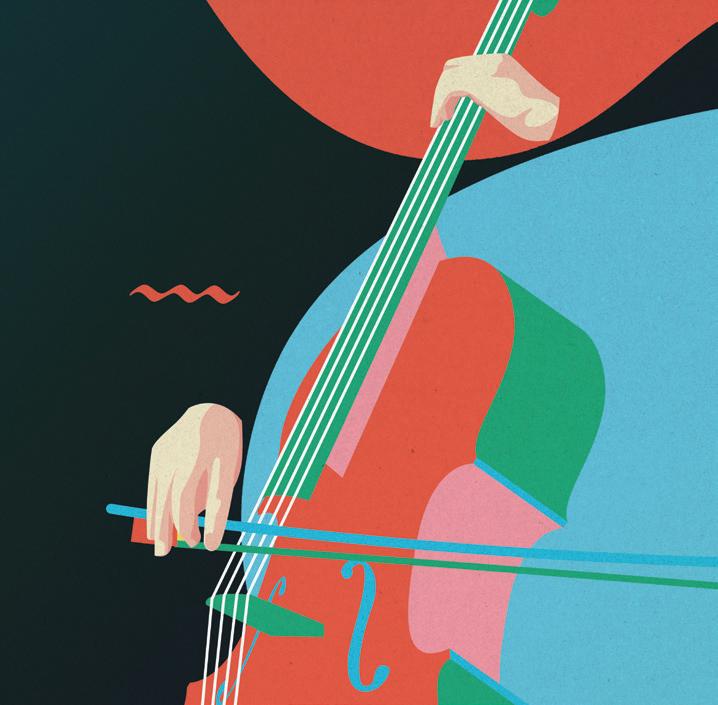
The Scottish Chamber Orchestra (SCO) is one of Scotland’s five National Performing Companies and has been a galvanizing force in Scotland’s music scene since its inception in 1974. The SCO believes that access to world-class music is not a luxury but something that everyone should have the opportunity to participate in, helping individuals and communities everywhere to thrive. Funded by the Scottish Government, City of Edinburgh Council and a community of philanthropic supporters, the SCO has an international reputation for exceptional, idiomatic performances: from mainstream classical music to newly commissioned works, each year its wide-ranging programme of work is presented across the length and breadth of Scotland, overseas and increasingly online.
Equally at home on and off the concert stage, each one of the SCO’s highly talented and creative musicians and staff is passionate about transforming and enhancing lives through the power of music. The SCO’s Creative Learning programme engages people of all ages and backgrounds with a diverse range of projects, concerts, participatory workshops and resources. The SCO’s current five-year Residency in Edinburgh’s Craigmillar builds on the area’s extraordinary history of Community Arts, connecting the local community with a national cultural resource.
An exciting new chapter for the SCO began in September 2019 with the arrival of dynamic young conductor Maxim Emelyanychev as the Orchestra’s Principal Conductor. His tenure has recently been extended until 2028. The SCO and Emelyanychev released their first album together (Linn Records) in 2019 to widespread critical acclaim. Their second recording together, of Mendelssohn symphonies, was released in 2023, with Schubert Symphonies Nos 5 and 8 following in 2024.
The SCO also has long-standing associations with many eminent guest conductors and directors including Principal Guest Conductor Andrew Manze, Pekka Kuusisto, François Leleux, Nicola Benedetti, Isabelle van Keulen, Anthony Marwood, Richard Egarr, Mark Wigglesworth, Lorenza Borrani and Conductor Emeritus Joseph Swensen.
The Orchestra’s current Associate Composer is Jay Capperauld. The SCO enjoys close relationships with numerous leading composers and has commissioned around 200 new works, including pieces by Sir James MacMillan, Anna Clyne, Sally Beamish, Martin Suckling, Einojuhani Rautavaara, Karin Rehnqvist, Mark-Anthony Turnage, Nico Muhly and the late Peter Maxwell Davies.
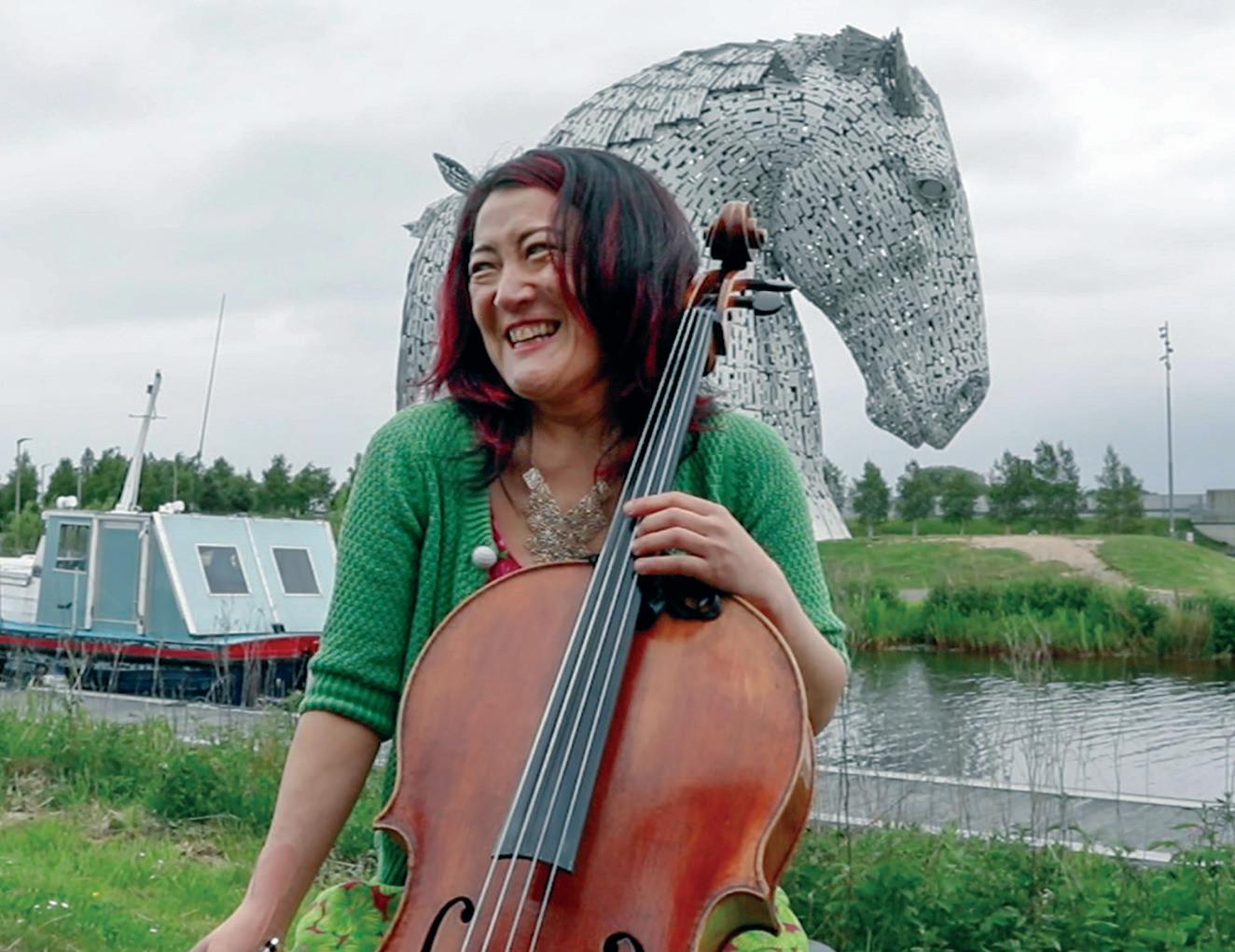
This summer, the Scottish Chamber Orchestra is bringing live music to 20 towns and villages across Scotland - from Golspie to Castle Douglas, Brechin to Kilmelford. Our Scottish Summer Tour celebrates the rich diversity of our musical heritage, featuring everything from timeless classics to a thrilling world premiere.
Your donation will help deepen our connections with local communities, showcase our exceptional musicians, and bring world-class performances to audiences who rarely have the opportunity to experience live orchestral music in their area.
For more information on how you can become a regular donor, please get in touch with Hannah on 0131 478 8364 or hannah.wilkinson@sco.org.uk